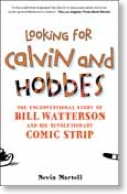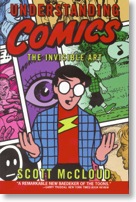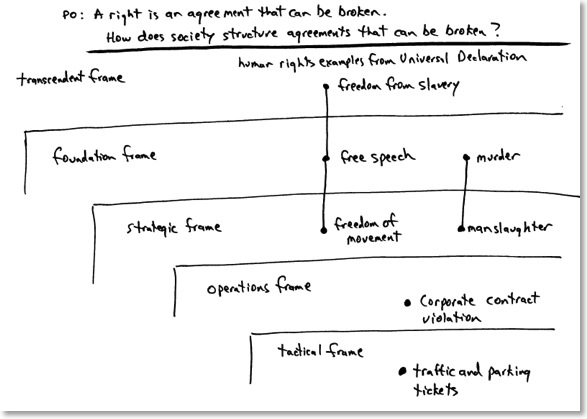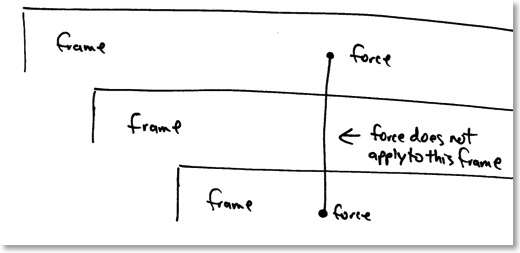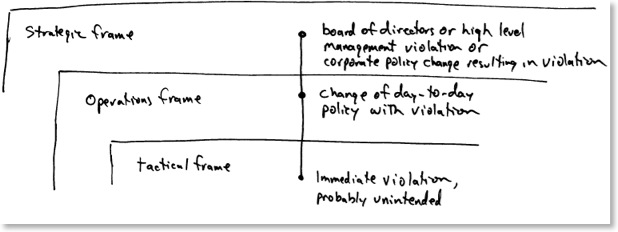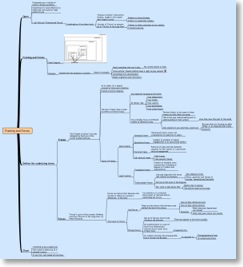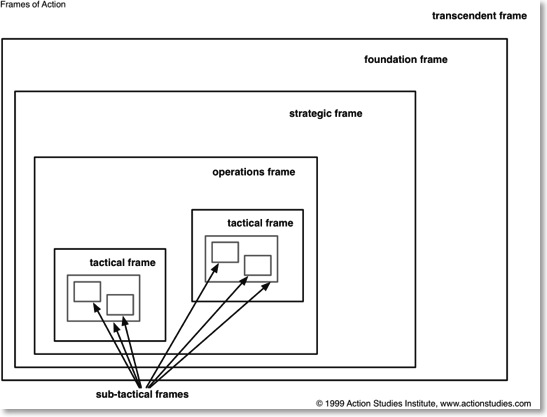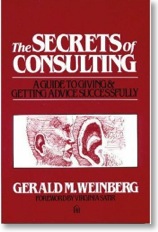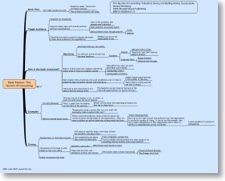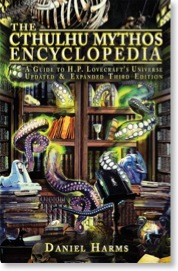A Tasty Morsel
In fact there are so many apocryphal stories surrounding sandwiches that you wonder how much about what we know about sandwiches is true.
That said, there’s quite a lot to learn, as I found out while reading Sandwich: A Global History by Bee Wilson.

This slim volume is part of The Edible Series by Reaktion Books. If it’s any indication of the others, the series is fine indeed. Wilson begins with the Fourth Earl of Sandwich and proceeds to take us through a trip around the world discussing the forms of sandwiches and their ethnic origins.
Sandwiches have at different times been eaten by the poorer classes, the nobility, workers, picnickers, hikers and everyone else who is on the go. The ability to eat a sandwich in one hand (as opposed to a sit-down dinner with cutlery) allows us to do things with the other hand like take notes, write reports, read and more recently type on the keyboard. This says just as much about the changes in our lives related to eating and dining habits as it does about the sandwich itself.
She also covers other interesting tidbits like, according to a court ruling, a burrito is not a sandwich. You’ll have to read the book to find out why.
The book has many other interesting tidbits related to this seemingly simple meal.
The final section lists many different sandwiches, their ingredients and where they were invented, if known. I quite enjoyed learning about the incredible variety of treats wedged between a two slices of bread.
I recommend giving this tasty volume a read.
Sandwich: A Global History
Bee Wilson
2010, Reaktion Books Ltd.
ISBN 978-1-86189-771-8
Looking for Calvin and Hobbes
It turns out that I’m not alone. Very few people know much about the reclusive Watterson, including the author Martell. I was hoping to find out how Watterson sees the world, but that’s not really what this book is about. Martell uses the analogy in his book of the archaeologist. Instead of Watterson being a complete puzzle that Martell can put together, he found himself instead being an archaeologist on Watterson’s life due to his habit of avoiding the public eye. The puzzle is there, but you don’t know how the pieces fit together and know that you don’t have the entire puzzle anyway.
Instead, continuing the archaeological metaphor, you could say that this book similar to the idea of placing a paper over a stone and taking a rubbing of it with charcoal. You get the outline of the subject, but not really much insight into the inner workings of the artifact from which you took the rubbing.
Similarly with Watterson’s life, Martel has taking rubbings far and wide that describes the outer edges and textures, but doesn’t reveal too much of Bill Watterson himself.
Still, the book is interesting in many other ways. Martell examines the impact of Calvin and Hobbes on modern culture, the role of comics and the power they have in our society, should those stories be told well. In this respect it reminds me of some of the messages in Scott McCloud’s “Understanding Comics”.
The book is also an autobiography of Martell himself, although I don’t think it was initially his intent to show this part of himself.
“Looking for Calvin and Hobbes” is a worthwhile read for insights into the comics industry and that part of our society. It is a homage to Calvin and Hobbes the comic strip. It is less so an insight into Bill Watterson himself, which is probably what Watterson prefers. I tend to think that wisdom is best gleaned from those who profess to not have it and instead claim to be “ordinary”. There are a few gleanings here and there but it is clear that this is only the charcoal rubbing of the surface.
Nevertheless, I recommend it.
Framing and Forces Part 2: Forces
The concept of forces comes from the book “The Art of the Long View” by Peter Schwartz. It’s used for his scenaric thinking technique of strategic planning, but performs well for other purposes.
Schwartz describes forces as “factors that influence the success or failure of a project, endeavour, or decision”. I usually write the project, endeavour, or decision at the top of my diagram to help focus my thoughts. It might be best to show an example for a specific problem and explain it after.
I want to draw a concept from Leadership Calgary that I was working on last year. I was in the human rights learning day and we were given as a starting point a definition of a right as “an agreement that can be broken”. Remember that this is a starting point, because you can see that there are several questions that get raised from this definition. The definition is provisional.
To map out the definition I wanted to draw the forces used in the different types of related agreements, where they apply in society. Specifically I wanted to indicate the frames operating in society that are concerned when one of these agreements is broken. There are all sorts of agreements, but I wanted to draw a few select ones to illustrate my thoughts on the matter. The drawing below is my attempt to illustrate this. (Thanks go to Meg for listening while I drew a different version of this.) You may click the diagram for a larger version.
On a diagram like this I draw forces in a few different ways, depending on what I want to get across. If I know the general position of a force, I will draw it with a dot and label the dot, positioning it in the appropriate frame, like “traffic and parking tickets” in the tactical frame and “corporate contract violation” in the operations frame.
Sometimes a force is broader than a specific frame so you need more than a dot. In this case I use line spanning more than one frame, which indicates a range of effects over multiple frames. An example of this is the human rights examples in the diagram. It’s important to place a dot on the line in each frame that is affected. It’s possible that you might skip frames in between, indicating that that frame is not involved with this force. You draw this using straight line through a frame with no dot in that frame.
The only other technique I apply is I sometimes use an arrow to indicate trends, direction, or desired direction. Sometimes forces move into different frames depending on a shift in perspective or to a shift in the problem at hand. In this case I draw an arrow showing the general direction.
I’ve drawn these by hand to show you that this isn’t supposed to be a fancy drawing technique. Rather much like Dan Roam’s book “The Back of the Napkin”, this is intended to illustrate and to reason through issues, either by yourself or with others. It is useful for chalkboards, paper scraps and napkins. You can certainly draft up a clean version afterwards, but the point in the tool is ease and spontaneity with depth. If I was drawing the “a right is an agreement” diagram on a paper or whiteboard working it through with someone, the discussion would probably go something like the following. You may want to bring up the diagram in a separate window.
If we assume that a right is an agreement that can be broken, how does that relate to other agreements in society? These can be broken as well, but how is a right different from those types of agreements? If we pick an example of a simple, trivial violation, traffic and parking tickets immediately come to mind. In this case the law has been broken, but the crime was probably committed based on a momentary mistake rather than part of a greater plan (thus a tactical decision). In addition, the impact to society isn’t as significant relative to other crimes, so this is an agreement in the form of a broken law at the tactical level.
Next we consider two corporations that do not live up to the contract they wrote between themselves. Corporations tend to be focused on day-to-day operations (getting the job done) and, if they break agreements, will probably break their agreements with one another in this frame (the operations frame). You could make an argument that corporations sometimes make immediate momentary decisions that violate contracts. That would then create a range extending down into the tactical frame. You could also make an argument that on occasion a board of directors might direct their staff to no longer follow a certain contract. This would extend the range up into the strategic frame and so a line would be drawn up to there as well. These are all cases where we have an agreement in the form of a broken contract at one of these three levels.
In the case of killing in society, thereby breaking agreements of right to life and safety, I selected a couple as an example. When a person is convicted of a murder charge, we consider their actions to have been preplanned or otherwise too egregious to lightly forgive. This is a violation of the ability to society as a whole to function properly, so murder exists at the foundation frame. We use the crime of manslaughter for times where there are extenuating circumstances and the intent behind the crime is less clear. I placed this in the strategic level (as I was thinking of defence lawyers operating strategically for their clients), but it might also be more properly placed in the operations frame, indicating that the crime was committed as something was being done, rather than with strategic intent (which then might be murder). You can see how other forms of killing in society might apply. “Crimes of passion”, self-defence, or crimes of temporary insanity might be in the tactical frame, even though the impact to society is greater. I’m not going to discuss the topic of euthanasia, but if you think about it for a bit you can see that it clearly sits in the transcendent and foundation frames, because of the effect it has on society and humankind as a whole. How we handle that topic defines a key portion of who we are and how we as humanity define ourselves.
By now you should also see that this isn’t a tool for judging right or wrong. Rather, it’s a tool for judging range of effect, range of importance and provides a vocabulary for thinking about difficult, not understood, or hard-to-pin-down topics.
In the case of human rights, I selected three from the UN Universal Declaration of Human Rights. This functions as a useful mechanism for analysing in which frames the document is written. Freedom from slavery covers all of humankind and is part of the essence of how we define ourselves as a species. As such, it resides in the transcendent frame. Free speech is defined to varying extents from one culture to another. That is, the support of it or the suppression of it to a greater or lesser extent tends to be defined culturally. Thus, Free Speech resides in the foundation frame. Freedom of movement (to leave your nation and re-enter it) is quite variable from one country to the next, one government to the next, and changes based on complex combination of informal agreements, treaties and other factors. This then indicates that freedom of movement is operating at the strategic level.
So you can see that the definition of a right as an agreement that can be broken is useful for analysis purposes. We can do the following with this diagram:
Analyse the varying degrees of rights that the Universal Declaration defines:
- relative to each other
- relative to their importance in humankind
- relative to how likely they are to be broken, and who might be likely to break them
Analyse agreements of other sorts:
- relative to their severity in society
- an indication of their impact to society and how violations should be punished
- as a tool to evaluate “creeping rights” like a “right to a parking spot” and show them for the false importance that they are (this is clearly a tactical frame issue)
This posting is turning out to be a bit longer than I’d intended, so I will delay my second example, something from the business world, for a third posting.
At this point it may occur to you that a concept like forces really isn’t necessary to use the frames tool. To some certain extent that’s true. I find however that using the forces concept focuses my thoughts directly on what is influencing the topic I want to study. Before I added the forces technique to the frames tool I found that my thoughts were less focused and what I was drawing wandered around a bit. That can be helpful when you want less precision, but can get in the way when you want to think things through clearly. Your application of forces will ultimately lie in how much you want to focus at any particular time. It’s a simple thing, but important to keep in mind.
You may like to see the mindmap that was used to write the draft of this series of entries. Please click on the map below for a bigger picture.
Framing and Forces Part 1: Frames
The tool I have in mind is what I call my “Framing and Forces” tool. This tool is a combination of two other tools, which I’ve found to work well together. The first is the “Frames of Action” map taught in Leadership Calgary and the second is the concept of “Forces” as described the book “The Art of the Long View”, which I’ve talked about before.
This posting will talk about the Frames of Action and a second posting will talk about forces.
Frames of Action was designed by Ken Low from the Action Studies Institute. It is used as part of the Leadership Calgary curriculum (and used here with permission from Ken).
The term “Frame” refers to a particular level of focus. The diagram is built to keep your attention on several different levels of focus. We often pay attention to only one or two different levels and even then inconsistently and at different times. This tool helps you to be aware of what frames you and others are using. The concept of frames drives your understanding towards how you see others acting and how they see themselves acting. It also explains what they (or you) cannot see because they (or you) are focusing on other things, or on an inappropriate frame for the problem at hand.
You can use this tool to think about your own frames: your family, department, country, government, school board, or any other organization. It’s very versatile.
Below is a blank diagram of all the frames. Click for a larger version.
The frames are broken down into several different types. Not all of them are worthy of your attention at any particular time. That depends on the situation. The frames that most people are familiar with are the following (in order from general to more specific):
- Strategic Frame - This frame deals with planning the strategy that is needed. Here you set up your plans for deploying your solution or approach. As with the name, this frame deals with overall strategy.
- Operations Frame - This frame deals with the creation of common patterns that you use to implement your strategies (“the doing of the strategies” ). Often this is where processes are created, or simply things you regularly do in order to get the job done or problem solved. It might include training, logistics, ways of doing things, hierarchical roles and responsibility. As with the name, this frame deals with the doing of day-to-day operations.
- Tactical Frame - This frame deals with the steps needed in order to accomplish a specific goal. The term “tactic” is used here to refer to something specific, like a specific project or goal. This could be winning a certain objective, delivering a certain product, and so on.
- Sub-Tactical Frame - Below tactical frames are any number of sub-tactical frames, which are used to accomplish tasks for the greater tactical goal. These can be smaller tasks of any sort. It’s often not useful to list them unless they are in some way creating problems at a higher frame.
I think an example might be helpful. A company has overall goals to make money in a certain market segment, defined by their strategies (Strategic Frame). They decide that they need two different divisions “A” and “B” in order to achieve this, so they create those divisions. Each of these divisions has some common Operations Frames (because they work in the same company) but some independent ones as well. Other divisions like Finance, Legal and Human Resources have their own Operations Frames, though also share some with A and B.
You can probably see how this diagram can be used to show conflict. For example, if divisions A and B are in competition with one another for some reason (like bonuses for completed jobs from corporate), they might not be inclined to cooperate with each other. In adversarial companies they might even be “forbidden” to talk to each other or be physically separated to discourage communication. These are examples where divisions are operating in two different conflicting tactical frames, or even two completely opposed operations frames. This is usually not healthy for a company, but it is sometimes done with “startup” divisions that are isolated away from the main company in order to do some unique work. This may or may not be good for a company, but that is another discussion.
There are two other frames that are less well known but are just as important.
- Foundation Frame - Above the strategic frame, this frame talks about the “story” of “what we’re all about”. It describes communities that an organization resides within and how it relates to those communities. These communities both allow and limit freedoms, provide opportunity for responsibilities and specify obligations. A computer company works with several foundation frames, such as what they do (and do not do) relative to other companies and competitors, the physical communities they exist within, including laws, culture, their employees and ways of doing business. A religious organization or charity also operates within many such frames. In fact, we all do as contributors to and people who benefit from society. Many ethics policies in companies, specified as partly strategic frame and operations frame documents, are written to abide within principles at the foundation frame level.
- Transcendent Frame - Above the foundation frame, this frame is the “story” of our connection with existence and life. Despite the title, “transcendent” does not imply any religious or mystical connotation, though many religions do make strong connections with the transcendent frame. When we talk about essential wisdom, philosophy or experience from the past, this falls within the transcendent frame. Some environmental groups talk of protecting the planet for ourselves or for the future. They are describing a transcendent frame that promotes the continued existence of all life on the planet. An example of a company that directly connects their work to the transcendent frame is Ray Anderson’s Interface Inc, which plans to make the company 100% sustainable, and is actively working towards that difficult goal.
You often will not use all frames when drawing a Frames and Forces diagram, but it doesn’t hurt to at least list them on the diagram to jog your memory to see if they are involved in the problem you are trying to solve.
The next posting in this series will talk about Forces and provide an example.
You may like to see the mindmap that was used to write the draft of this series of entries. Please click on the map below for a bigger picture.
Book Review: The Secrets of Consulting
I don’t think that the book is named correctly. It would be better titled “The Secrets of Problem Solving”. That’s a more accurate title, but it’s boring and probably wouldn’t sell as many books. I can see many consultants reading this book due to the original title. However, I believe that the target audience is for anyone that needs do overall problem solving in organizations (which is everyone, isn’t it?).
Weinberg assumes that most problems in organizations aren’t primarily technical ones. Rather, most problems are people-based and exist or continue to exist through people’s actions or inactions. If you ignore the people the problem won’t get fixed. Makes sense to me.
The book is broken down into several chapters describing major categories of problem solving. Chapter titles like “Being effective when you don’t know what you’re doing”, “Seeing what’s there”, and “Seeing what’s not there” give you a good idea of the content. Each chapter covers problems by telling a humorous story. It then gives a set of rules or guidelines that the author learned from that story.
For me these guidelines are the best part of the book. It’s difficult to find a book that has good distilled knowledge. A reader usually has to read many books and can pull a gem or two out of each one. This book is filled with them, and you don’t have to do as much work because they’ve been generalized for you already. There are other books I know of that do this well, for example “Metaphors We Live By” and “Simplicity”. In the computer field I can also think of design patterns and refactoring principles. Books like this are rare, though.
I also like how the book is structured so you can easily pick it up and put it down. Each guideline is broken up into a separate mini-section and they are all listed at the back of the book with page references. This makes the book very easy to use as a tool, rather than something you read once and put up on a shelf to dust.
Here’s a couple of examples: “The Why Whammy” and “Marvin’s Second Great Secret”.
“The Why Whammy” says “We may run out of energy, or air, or water, or food, but we’ll never run out of reasons.” There is a lot in this one sentence. Apply this guideline when you are trying to figure out “why” a problem is occurring. While it is true that asking the question “why” is very useful for obtaining facts, Weinberg states that it does not give you the underlying principles that led to these facts. Due to The Why Whammy you can be asking “why” forever and continue to get more facts without getting you closer to a solution. Weinberg is not stating that you should not ask “why”, rather that you should do it judiciously and not assume that it in and of itself will solve your problem.
A second guideline I like is “Marvin’s Second Great Secret” which states "Repeatedly curing a system that can cure itself will eventually create a system that can't." So before interfering with problems, think a little bit about the overall problem solving health of the organization. After all, many problems are solved in an organization already otherwise nothing would get done (that’s related to “Rudy’s Rutabaga Rule”, which I won’t cover). Weinberg is reminding us to avoid going in and meddling in problems that the organization is perfectly capable of fixing. If you do so often enough, then you create a dependency in that organization and it loses it's ability to independently correct a problem. Many executives would do well to understand this guideline.
Many of the guidelines in this book are great and I think I will need to read the book a few times to learn and apply them properly. I can immediately see where many of them apply, from diagnosing an existing problem and preventing problems from occurring in the first place.
The humour in this book makes it even more appealing. Guidelines can be dry and thus difficult to learn and remember. These ones are told with simple funny stories, which greatly increases their appeal. After all, who wouldn’t want to know more about “Brown’s Brilliant Bequest” or “The Orange Juice Test”?
I highly recommend this book to anyone who wants to add general problem solving skills to their toolbox.
The Secrets of Consulting: A Guide to Giving and Getting Advice Successfully
Gerald Weinberg
1985, Dorset House Publishing
ISBN 0-932633-01-3
You may like to see the mindmap that was used to write the draft of this entry. Please click on the map below for a bigger picture.
New Lovecraft Goodies
The Cthulhu Mythos Encyclopedia is published by Elder Signs Press. This is the third edition of the book. It’s a wonderful reference for all major things Lovecraftian. Daniel Harms has done an incredible amount of research into the Cthulhu Mythos stories, evident by the thorough articles and extensive cross referencing. I initially heard about this book from the excellent interview with Harms on the Yog Radio podcast. Check it out if you have some time.
The best book that I can compare it to in terms of effectiveness is the very thorough Malleus Monstrorum from Chaosium, but the Encyclopedia covers all aspects of the Cthulhu Mythos, not just monsters.
One of the drawing points of the Lovecraft stories is that, in the best tradition of horror stories, more is obscured rather than revealed. However sometimes you really need a little clarification and the Encyclopedia provides everything you need. It is already a valuable reference for me for reading and gaming.
The only thing I miss is a concordance, but that is mitigated by the fact that the articles do provide some references to other articles. It would also increase the number of pages by quite a bit, but a PDF on the website would be a nice compromise.
Tour de Lovecraft - The Tales is published by Atomic Overmind Press. Ken Hite has written many valuable supplements in the gaming industry. My personal favourites are his GURPS Horror supplement and the Trail of Cthulhu sourcebook. GURPS Horror is an excellent introduction to the mechanics of what makes a horror story or scenario work, and provides a clear toolkit for how to write and analyse horror. Trail of Cthulhu is an excellent adaption of the GUMSHOE system into the Call of Cthulhu universe. Hite clearly knows horror and knows the Mythos.
In Tour de Lovecraft Hite shows similar skill at interpreting each of Lovecraft’s stories. They are arranged chronologically by story, each entry being a small essay on something interesting about the story and how it ties to major threads and themes that Lovecraft used. I’ve already re-read a couple of Lovecraft’s stories, following each of them up with a reading from Hite’s book. The result is a much deeper appreciation and enjoyment of what Lovecraft was trying to express.
There is also an excellent short introduction describing the major forces and people influencing our understanding of Lovecraft’s literature, as well as a list of the seventeen tales that Hite considers from “Great” to “Absolutely Perfect”. I haven’t read them all, but so far I haven’t had any major disagreements with his list.
These two books make a wonderful addition to any Lovecraft aficionado’s library. I highly recommend them.
The Challenge of Knowledge Capture
Take, for example, the excellent “The Art of the Long View” by Peter Schwartz. This book describes the process of “scenaric thinking” for coming up with different scenarios for visualizing different kinds of futures. Today we would probably call this a form of strategic planning.
Strategic Planning is a difficult thing to do, let alone do well. Schwartz proposes a method in this book that I have used in the past successfully.
The problem with these types of books is that the information is rarely presented to me in a form that I can immediately use. I frequently need to extract the essence of the information out from the book before I can use it. Otherwise, the information is trapped in the book and when I’m in the thick of things in the middle of work, I don’t have time to reread the book and try to get the juicy parts on the fly. I don’t expect or want books to spoon feed me, of course. I know that I have to do the extraction work if I want to get the value out of the book.
This however points to the bigger problem of knowledge capture. How do I learn something and then codify it in a form that I can actually use? If I can’t accomplish this then the book sits on the shelf to dust.
I’ve struggled with different methods of knowledge capture over the years, and have settled on the notion of putting information into “templates”. By this I mean that I rewrite the information from the book in a substantially reduced form, but I also change the presentation of the material so it is in a file that can be immediately opened and used. Think of Word templates for business letters or Excel templates for budgets and you get the idea.
I’ve experimented with different approaches for doing this. A simple approach is to use Word. Word templates have the advantage that I can put anything I want into them and get a document up and running quickly. Once I’m done with the template, I usually paste things into whatever other material I am working on at the time.
However, I abandoned that approach a few years ago because Word still locked me into a linear way of thinking about whatever problem I had. These types of knowledge capture problems needed a more dynamic way of thinking about the problem.
This was solved when I discovered Mindjet’s MindManager several years ago. I’ve been a constant user of the program since version 4, which was released somewhere around 1999. It’s a great program for brainstorming, but I use it for much more than that.
Take Schwartz’s scenaric thinking, for example. I have created the MindManager template below that extracts the essence of the process from my copy of the book. I can’t show you any details because that would probably infringe on the book’s copyrights, but each of the notes on the branches contains text that I’ve summarized from the book.
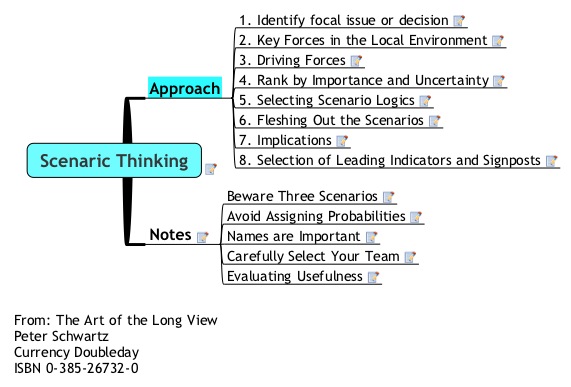
Whenever I need to create a scenario, I open this template. The “Approach” branch is set up to act as a trigger in my mind. It tells me what I need to think about and I start adding this information as sub branches to the map. If I need to jog my memory further then I can look at the notes.
In this way I can add new processes into my daily workflow without slowing things down too much. If I slow things down too much then I am no longer productive and I can’t get my work done.
Once I’m done with the template I can export the information into some other format, usually Word or Powerpoint, and add it into whatever material I am working on at the moment.
This isn’t a perfect system, but over the years it seems to be the one that has worked the best for me. The templates are harder to create than they first appear. It’s far too easy to create templates that have too much information from the book and become unusable because, again, they slow me down too much due to information overload.
Here are a few of the templates I have created over the years:
- Concept Mapping
- Edward deBono’s Direction Attention Thinking Tools (DATT)
- Risk Management
- Use Cases
- Work Breakdown Structures
They often change as I add new information into my work processes. All my templates are provisional in that they can always be improved. They all have the benefit that they give me a good start when I need to do these tasks in my job.
Writing on The Back of the Napkin
Well, that’s not quite right. It’s actually about drawing pictures on anything (paper, whiteboards, the back of your hand if you must). This book is aimed for primarily at business people, who aren’t necessarily known for great drawings, favouring “chartware” instead.
“The Back of the Napkin”, by Dan Roam, argues that we spend too much time making charts that people don’t understand. When we make diagrams they are generally not as useful as they should be. Much of what we write isn’t read because much of it is presented in a way that we are not suited to understand. As a person who works for a multinational, multiethnic company, where much of the team does not share the same language, I know that words can cause problems. Also, adding more of them to clarify isn’t always the best solution. I often feel that if I could just draw a picture in the right way I might have a better chance of getting my idea across.
This is just the kind of problem The Back of the Napkin was written for. Roam proposes that all problems and ideas can be broken down into a few unique approaches. From those approaches you can use a straightforward system he calls the “Visual Thinking Codex” in order to select the type of information you want to convey. Better yet, you only need a few simple boxes and lines to pull it off. The author believes that it would be much better if you drew it rather than prepared elaborate charts. This is not to say that elaborate charts don’t have their place. Rather, they are overused and often prevent clarity.
As I was reading the book, I found that much of it wasn’t a surprise. For example, If you want to express “when” information, you use a timeline. I’ve been drawing Gantt charts for most of my career, so this wasn’t a revelation. Or if you want to show “how” you use a flowchart. Again, nothing new.
I noticed something interesting on the way to the last page, however.
The point behind all this wasn’t necessarily to tell you something new. The point was to frame the problem of drawing diagrams into a specific way of thinking about the diagrams. I could see over time that the Codex created by Roam became very useful to frame your thoughts about a particular diagram, based on the information you wanted to convey. Sometimes my thinking is sloppy in this area and I use a diagram that isn’t suited to the problem at hand. Then I have to spend far too much time explaining what I just misdrew.
With the Codex I can think about what to convey in advance and have pointers to what I should be drawing. Very helpful.
I’m sure others may get other things out of this book. I don’t need to be convinced to draw a diagram and I will readily take pen in hand and go at it. (That makes me a “Black Pen” person in the book.) Others need to be convinced of the power of diagrams, or that “they can’t draw” isn’t an issue because these are simple drawings to make.
All in all, I quite liked the book and have already started using it in my daily work.
As an interesting side note, I’ve noticed that I now start categorizing diagrams that I see in the newspaper based on the Codex. Sometimes they match and sometimes they don’t. The ones that don’t match make me look at them to see if they are really displaying information properly. So, the book has also provided me with an interesting diagnostic technique.
Unit Operations is a Disappointment
When I first heard about this book, I was quite excited about it. The basic premise is that Bogost is frustrated with the existing quality of critical commentary of videogames today. Intelligent discussion on the subject is practically non existent, to put it bluntly. Bogost argues that we can take the techniques used from literary criticism and generalize an approach that can be used to critique videogames. He calls this technique “Unit Operations”. By extension, one could apply the technique to any medium “from videogames to poetry, literature, cinema, or art”.
This got my attention. I have long thought that storytelling media (books, movies, videogames, pen-and-paper games, etc.) are more related than not. If true, you should also be able to use similar techniques to review them.
I have also been unhappy with the general quality of critique in storytelling media. In books, the more technical critiquing is so academic that it’s almost impossible to fathom whether they’re saying anything useful or not. In movies and videogames the reviews often seem too juvenile to be informative. In my mind most of this “critiquing” is reduced to the simplest 1) did the reviewer like it or not? and 2) how is this thing like (or not like) the others?
It would probably be far too optimistic to assume that there is one standard approach that could be used to critique these things. Nevertheless, I was hoping for something in that general direction with this book.
What disappointed me the most is that the book seems focused on convincing the reader that a common technique like Unit Operations is plausible. Thus, the book spends a lot of time talking about theory. Despite claims in the book to the contrary, it spends almost no effort on actually using the Unit Operations technique to critique anything. If I take for granted that such a technique is plausible, then I expect the author to show me how he thinks it should be done. Bogost makes no such information available, even as an appendix.
This is a disappointment, because most of the books in the new media/game studies line of books from MIT Press are written for the practitioner (“Rules of Play” and “Second Person” come to mind). Yes, theory is discussed, but how that theory is applied is also shown. This book leaves the practical derivation up to the student. While that might be fine for the students, it’s not good for the practitioners. We have other things to do.
Ultimately, that’s why it became the partial read I mentioned when I opened this article. I lost patience and started to look for examples somewhere, anywhere, in the book. It was for naught.
So, this book goes back on the shelf until a more practical one takes its place.
Tracking down the Fabled Library
One of the stories that has always interested me is the story of the Library of Alexandria. The library was very important to the ancient world, but is not necessarily well known today. For example, the city of Alexandria is indeed featured in the Seven Wonders of the Ancient World, but it is on the list for it’s lighthouse, not it’s library. I suppose that’s hardly surprising, since the lighthouse was reported to be between 115-150 m tall, being one of the tallest man-made structures at the time. Size does indeed impress.
The library was no slouch with respect to size, but it was the size of it’s collection of books, rather than the height of its towers, that made it so impressive. There are many legends around the unfortunate fire that supposedly destroyed the library, which makes the story all the more interesting and tragic.
Although I have read about the library before in books like “Library: An Unquiet History” by Matthew Battles, I’m very interested in the latest book I’ve just received called, appropriately enough, “What Happened to the Ancient Library of Alexandria?”, by Brill Press. It contains a series of papers on the subject put together by the Bibliotheca Alexandria, or New Library of Alexandria. I just finished one talking about the tradition of private collections and temple libraries in Egypt, setting the stage for a library on the scale of the one at Alexandria.
I’m looking forward to learning more about this amazing building.
LibraryThing Sidebar
This one doesn't seem as easy to control, but we'll give it a try.
Experiment with Amazon Lists
Here are the two lists I created:
"Foundation for a Course on Thinking" from my previous post here.
"Leadership Calgary 2008 Class Reading List" from the reading list for this year.
Book Summary: The Assault on Reason
The Assault on Reason
Al Gore
2007, Penguin Press
ISBN 978-1-59420-122-6
In this book Al Gore describes the changing face of media information and communication in America, and how those changes are reducing American's ability to reason. He writes that the shift from newspaper (print media) to radio and mostly television has changed the way Americans perceive the world around them. Television, being a visual medium, can distort the message into short sound bites and prevent the detailed inquiry that people tend to do when reading and internalizing the printed word.
Gore also discusses the vision of the Founding Fathers of America, and how they constructed the constitution and the laws of the nation to be resilient to challenges to it. However, he argues, the Founding Fathers depended on an informed populous using healthy debate and inquiry through the printed media. Neither of these are in existence in today's society to any great degree.
Gore goes on to state that the Bush Administration has taken advantage of these weaknesses America today to create a society that is skewed from the way America was initially conceived, and this is causing America to be much more fragile to external threats.
There are many interesting points in this book, but quite a bit gets in the way from this being a great book. First, I should talk about my criticisms.
This book is badly edited. I understand that the quality of editing has slipped in recent years, probably due to cuts to editorial staff and funding. However, you would expect someone of Al Gore's statue to pay for good editing. There are many passages that are repeated in different parts of the book; one especially egregious passage is almost identical except for a couple of words, and appears on facing pages! The arguments wander a bit and some of the metaphors used aren't as compelling as they could be.
It's also clear that Gore has an axe to grind towards the current Bush Administration. This is hardly surprising, but after reading several pages of it one understands the point. More pages aren't necessary and the argument should move on. There are also passages talking about global warming and, although interesting, really don't have much to do with the decrease in the ability of the American populace to reason.
There is also an almost biblical theme running through the book of the wise old Founding Fathers setting out the path for the nation, how America has now fallen from grace, and how grace, integrity and honour can be regained through the restoration of that path. I say that this theme is almost biblical because Gore continuously has a seemingly idealized view of the Founding Fathers of America and uses "fallen" imagery in a way often seen in the Bible. I doubt this is accidental because Gore talks several times about his faith and is probably speaking in part to that audience. One Leadership Calgary colleague pointed out to me that Gore needs to use this mechanism because he hasn't actually defined exactly what reason is and how it works. If he had done that then he could rely on the assault on those concepts rather than an assault on the vision of the American nation.
All that said, I thought that the general message of the book made it a worthwhile read. The idea that constant bombardment from television, coupled with the steep reduction in readers of the printed media, leads to shallower thought has much truth in it. The idea that people are disengaging from their political responsibilities and turning towards more individual achievements rather than community ones is good. The point that governments can easily take advantage of this situation and control a democratic country a la Nineteen Eighty-Four is disturbing and probably far closer to the truth than we would like to admit. Gore provides many examples to try to prove that all of this is the case.
Much like Blessed Unrest, I find that there is enough dissatisfaction in this book that I cannot completely recommended it. However, also much like Blessed Unrest, I think this book sends an important message that should be considered. So it is with those reservations that I believe this book should be read, but the reading be carefully, ahem, "reasoned".
Book Summary: The Rights Revolution
The Rights Revolution
Michael Ignatieff
2000, House of Anansi Press
ISBN 0-88784-656-4
This book is based on the CBC Massey lectures where Ignatieff speaks of his views on rights. Despite the name, this isn’t a revolutionary book, but it does cover the bare bones of modern rights thinking rather well. I disagree with Ignatieff on some points, but that doesn’t reduce the book’s usefulness. I wouldn't recommend it as the first book to read, though. You would probably do better with The History of Human Rights instead.
Book Summary: On Human Rights: The Oxford Amnesty Lectures 1993
On Human Rights: The Oxford Amnesty Lectures 1993
Stephen Schute and Sesan Hurley, Ed.
1993, Basic Books
ISBN 0-465-05224-X
This book is based on the Oxford University/Amnesty International annual conference. It is a series of essays from a variety of writers on the theory of human rights. Many of these essays are quite thought provoking, though it should be noted that the target audience appreciates material a little on the heavier side.
I particularly liked the essay "Human Rights, Rationality, and Sentimentality" by Richard Rorty. It discusses the way groups of people infantalize or dehumanize others as a prerequisite for violating their human rights. That is, people need to see others as less than human so that, in effect, they are not violating the rights of humans. This essay gave me much to think about, especially with connections to "The Psychology of War".
Book Summary: The History of Human Rights from Ancient Times to the Globalization Era
The History of Human Rights from Ancient Times to the Globalization Era
Micheline R. Ishay
2004, University of California Press
ISBN 978-0-520-23497-0
This is an excellent history book, and formed the major portion of my presentation to Leadership Calgary. It does a very good job of placing many of the influential human rights thinking in context, including such surprising observations as how Marxism had an unexpected influence on human rights. If you don’t like reading history books, you will probably find this a little dry, but it is filled with interesting information about rights and how thinking about rights evolved through times.
Book Summary: The Universal Declaration of Human Rights
The Universal Declaration of Human Rights
Origins, Drafting, and Intent
Johannes Morsink
1999, University of Pennsylvania Press
ISBN: 0-8122-1747-0
I won’t beat around the bush on this one. This is a difficult book. It covers the entire history of the creation of the Universal Declaration of Human Rights. There are pages that cover an explanation why one nation didn’t like a single word in the text and wanted it changed. If you can stomach that kind of book, you will find lots of interesting tidbits about the extremely laborious time the authors had drafting this document. In doing so, you will learn a lot about the politics of rights and the making of massive international documents before such a thing was common place. The Universal Declaration, though not binding, is the single most influential piece of rights text in the world and the creation of it changed laws in ways no one could expect.
Book Summary: The Psychology of War
The Psychology of War
Comprehending Its Mystique and Its Madness
Lawrence LeShan
2002, Helios Press
ISBN 1-58115-238-8
This is an excellent concise (138 pages without notes) book about the human part of war; what makes us conceive of it and why we do it. I personally quite like the area on media and how messages sent to the media can change the minds of an anti-war populace and get them to go to war. Despite the topic, this is an anti-war book.
Book Summary: The Science of Good and Evil
The Science of Good and Evil
Michael Shermer
2004, Henry Holt
ISBN 0-8050-7769-3
This book proposes an “evolutionary ethics” approach to attempt to combat the fear of relativism in rights. Once religions were no longer a common standard with which to compare rights to, most thinking devolved into relativistic rights. Harshly put, extreme relativism states that you can commit atrocities in your country as long as you make the practice legal and don’t do it in our country, where it is illegal. This book attempts to counter that argument by proposing an evolutionary basis to rights and rights thought. Since evolution can’t really be questioned the way religions can as “standards of reference”, Shermer argues that evolution is the correct standard to use for judging the merits of various rights.
And So It Begins
I'll have more on the course later once I get into it a little bit. For now, I've finished the first book on the reading list, and I'd like to give my first impressions.
The book is A Short History of Progress by Ronald Wright. It is the text form of his CBC Massey Lecture. I was very happy with the book. It does a good job of providing an overview of the problem of civilization as we know it. Wright makes the case that we are currently in "The Great Experiment" of civilization, and we don't really know whether or not we've gotten it right. The author explains that there are many examples from the past that we fail to learn from, that many civilizations of the past also failed to learn from. There are also successes (Western civilization not necessarily one of them) that we could use as well.
I will be re-reading the book to make notes for the course, so I will have more to say on the book after that. I do recommend the book for anyone who is interested in the subject. It's a quick read and smoothly written.
A Course on Thinking
I've come to view thinking as a skill that can be taught, rather than something innate in people. This idea comes from Edward de Bono, and is something I've commented on before. He has many thinking tools that he has created to facilitate this idea and improve the skill of thinking.
Although the work he's doing is important, I believe that it might be incomplete for what I want. I am interested in the thinking tools, but his tools are sometimes not quite what I'm looking for. For example, his CoRT tools are excellent, but sometimes I want to focus more on perception, something that he covers in his "Po" tool, but perhaps in more of a technical way than I might prefer. I also would like to understand more of the foundation of thinking and again, though he is a starting point, I think I need to go further.
So where to start? Well, as I mentioned to my friend Chris, if I am going to create a course, then I need to come up with a curriculum. That means a syllabus and a reading list.
So, I've started with the reading list. I didn't want the list to be too large, but I wanted enough breadth that it covered the basics to my satisfaction. There are many offshoot areas that could be tackled, but I chose to ignore those for the present moment. They can come later.
So, here is my initial stab at a book list and my reasons for each selection:
Teaching Thinking, by Edward de Bono
Pelican Books, 1978, ISBN 0-14-022163-8
It is with a bit of reservation that I use this book, because I believe that it is currently out of print (all the other books are in print). However, it provides an excellent framework for talking about thinking. It sets the stage by providing a good definition for thinking and talking about it as a skill, relating this to perception and thinking patterns, and talking about how thinking can lead to errors, even when your logic is flawless. This book will be primarily used for theory.
Simplicity, by Edward de Bono
Penguin Books, 1999, ISBN 0-14-025839-0
I've commented on this book before. I include it here because many times part of thinking is related to sorting out complexity or narrowing things down to the appropriate level of relevancy. Although de Bono has thinking tools for this, his Simplicity book is a better generalization for defining the term simplicity (as opposed to simple) and putting some practical frameworks around how you actually make things simpler. There is some theory in this book and also some good practical application.
Metaphors We Live By, by George Lakoff and Mark Johnson
University of Chicago Press, 1980, ISBN 0-226-46801-1
This book specifically focuses on our use of language and how it modifies the way we think. For instance, mathematics is a tool that teaches a system of thought. It is a means of expressing and working with a specific subject area, mainly the sciences. Language is also a tool, though it's used so ubiquitously that people often forget this fact. Because language is a tool, it can express certain types of things but not others (again, a new thought for many). This book discusses the many metaphors in the English language and how it colours our thoughts, without our even realizing it. The intent of including this book is to provide a specific reference to how our thinking can be modified by the tools we use, using a tool that everyone uses: language. This book is a combination of theory and practical application.
Turning the Mind into an Ally, by Sakyong Mipham
Penguin Books, 2003, ISBN 1-57322-345-X
There have been many arguments that language is the basis of all thought. That is, if we didn't have language, then we wouldn't be able to think. Many people cannot conceive of thinking without language, it is so ingrained into us. This book teaches thinking below (above? beyond?) language. It teaches meditation from a Buddhist perspective, but eliminates all the jargon and most of the religious content. It is written for a Western audience and is intended to teach the reader about what the mind really is underlying all our thoughts and feelings. These are difficult concepts to express, but the book does a good job through good examples and stories. This book is included in the list because it provides a different view on how the underlying mind works and how we think. It has a balance of theory and practical application.
Drawing on the Right Side of the Brain, by Betty Edwards
Jeremy P. Tarcher, 1989, ISBN 0-8477-513-2
This book, like the previous one, teaches people how to observe and perceive. Where the "Turning the Mind into an Ally" is internally focussed, "Drawing on the Right Side of the Brain" is externally focussed. It teaches anyone of any skill level (or none at all) how to draw, by retraining people how to look at things. Even people who believe that they have no ability to draw can learn relatively quickly and simply. This book is included in the list because of how it teaches this skill of perception. It is primarily a practical application book.
Learning How to Learn, by Joseph D. Novak and D. Bob Gowin
Cambridge University Press, 1984, ISBN 0-521-31926-9
I have commented on this book before. I believe that adding the concept map skill is a good way of teaching people to organize their thoughts. Mindmaps also work well, but for this purpose I like the "diagnostic" idea presented by this book. With concept maps, you can draw them and then use techniques to determine if you wrote the map correctly and whether you understand what you're trying to draw. This book is primarily theoretical, but I am only going to use the practical part about concept maps.
So there it is: the preliminary list of books. The next step is to form a syllabus based on these books. I expect that to take a while, but at least I have the books narrowed down!
On Books and Libraries
Libraries can be grand things like the Library of Alexandria, but they can also be a humble shelf of books. Libraries can also be other things, like a collection of papers that someone decided it was useful to keep. Perhaps ironically, libraries may also be papers that someone would prefer to dispose of, but can't. I'm thinking of a chapter in Matthew Battles' Library: An Unquiet History that discusses a geniza, which is a kind of Hebrew "book tomb" where writings of all sorts are retained when they are no longer needed, and kept safe until they can be properly disposed of. When they are not disposed of, it provides an invaluable insight on the society that created them. These all amount to various perspectives on the preciousness of words and ideas and how such things are (or perhaps should be) treated in society. I suppose book burning is the ultimate in verification of the preciousness of words; if they cannot be countered, then despicably extraordinary measures are taken by those who wish to suppress the ideas they express.
I have quite a few books. I like to think that I don't hoard them but I am going to have to cull my collection soon. It's either that or buy more bookshelves. I find this culling very hard to do. I have books that I haven't read in years, but know that they are out of print, so if I part with them I may never see them again. Don't get me started about the whole idea of digitizing books. Digitizing does have it's uses in situations where the material is more reference related, like an encyclopedia. However, I've always thought of digitizing books as a rather unsavoury practice, similar to the nasty colourization done by Ted Turner on movies that, in my opinion, should have stayed black and white. Call me a luddite if you like.
I also use books to think about other people. For instance, when I enter a person's house for the first time, lots of book related questions run through my mind, like "How many books do they have?", "Do they have any books at all?", "What kinds of books do they have?", "What books do they put out for show, as opposed to what they read when no one is looking?", "If they have books, do they actually read them?" You have no idea how many people have told me that they "have" Stephen Hawking's A Brief History of Time, only to later reveal that they own it, but have not read it. (Personally I found that book intolerable, but that's a different story.) Basically, I think that, for better or worse, I try to learn a little bit about who people are by looking at their books. I suppose some people might do the same thing for music or movies.
Which to me means that this book I am looking at that I have read, and enjoyed, and am trying to figure out if I should get rid of is in some way a part of me. Even though I may have forgotten the general arguments in the book, the act of reading it has changed me in ways that I may or may not be cognizant. So it's not easy to dispose of such a part of yourself.
This article didn't quite go in the direction I had intended. I was intending to discuss the importance of libraries in general to society and reflect it back on my library and why it was important to me. Instead, I ended up discussing libraries as I thought they reflected on people and myself. Well, it has been argued that books in of themselves are nothing, and that it takes people to bring them to life through reading.
For now this book goes back on the shelf.
No Mindmanager for Concept Maps
Well, I'm sorry to say that the two don't mix very well. With the new Mindmanager Pro, it is now possible to draw Concept Maps (using the floating topics and relationships to link them). However, it isn't really suited to Concept Maps.
I will have to find something else with which to draw them.
Mindmanager is a good program for mindmaps, but not concept maps.
Concept Maps
Anyway, a friend at work recently introduced me to the idea of concept maps through this website. I printed out the Java concept map, and was quite intrigued at the idea, so I tracked down the original book that describes concept maps. That book is Learning How to Learn, by Joseph Novak and Bob Gowin.
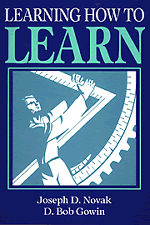
The authors describe concept maps as a "way to represent meaningful relationships between concepts in the form of propositions". Like mindmaps, concept maps have a central topic that the map begins from. In the case of concept maps, however, each topic is connected to each other topic using a proposition, some form of word or phrase that links the concepts together. Phrases like "leads to", "is because of", "becomes a part of", and so on are examples of these propositions.
In many ways this seems a logical extension of mindmaps, and is used similarly to depict a certain domain. The authors emphasize that this is a learning tool and the act of building these concept maps is used to solidify learning in a person and detect whether there are gaps in their knowledge of the area. This last part is intriguing, because mindmaps don't really have this "debugging" ability. The authors also provide a method for analysing the concept maps for these problems.
After reading that part of the book, I intend to try out these maps and see if they work the way they seem to. I'm encouraged by the Java concept map and my previous work on mindmaps, so we'll see what happens!
I should be able to try this with my Mindmanager program which, although expensive, is a great mindmapping tool.
Books that have Shaped Me #2
The second book in the series of books that were influential to me is Buddhism Without Beliefs, by Stephen Batchelor.
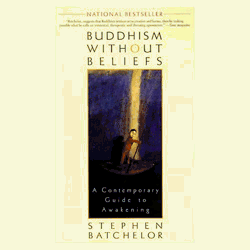
This book strips out all the things you would traditionally think of in a religion to the point that you wouldn't think a religion exists (you don't even have to believe in the Buddha, karma, or anything like that). But yet, one does. Perhaps, you could argue that it is the core of many or all religions. Simple things like Awareness, Integrity, Compassion, Becoming, and how to practice these things. Well, perhaps not so simple to do, but simplicity in terms of a religion.
This book taught me that, despite what I think of religions in the past, they do have value. (I have previously doubted this mostly due to all the pain that they cause along the way.) This is despite what you may have learned about your particular religion, and is something you can still learn even if you don't believe in any religion in particular.
It is perhaps interesting that Stephen Batchelor chose Buddhism as the means to write this book, for it probably could have been written from the perspective of any religion. My feeling is that he chose Buddhism because there may be less of a stigma to challenging the central thought of Buddhism (since this is what the Buddha always encouraged anyway). Other religions are less tolerant of challenges to their central cores. That's my theory, anyway.
Whichever way you look at it, a fine book.
The previous book in this series was: Simplicity.
Books that have Shaped Me #1
Me, being my procrastinating self when it comes to web stuff (I'm sure you've noticed that my web posts are few and far between), thought that I should post a book at a time, because otherwise the list will never get compiled. So here, in what will be a (small) ongoing series, are what I feel are the books that have changed me. |Book #1: Simplicity, by Edward de Bono
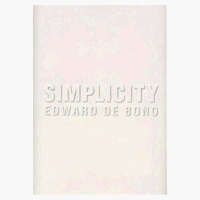
It can sometimes be hard to come up with a list like I'm mentioning. However, this book was easily at the top of the list without a second thought. If I had to pick one book by de Bono (and I own many), this would be it. I consider Simplicity to be his finest work. In Simplicity, de Bono takes a clear honest look at what simplicity really is.
One of de Bono's main ideas, which he comes to again and again through his books, is that thinking is a skill that must be taught, it is not innate to us as humans. Sure, we can string thoughts together, but he believes that we must practice in order to really think. That's pretty radical if you stop to ponder what that really means.
In a similar fashion, de Bono addresses simplicity in this book. Simplicity is also a skill that must be taught. Many people pay lip service to simplicity, it's a buzzword, something to put on performance appraisals or on advertising. However, what is simplicity, really; how do you do it? How do you know you've made things simpler? How do you go about making things simpler? Ask yourself this question and I'll bet that you're hard pressed to answer in anything other than mere generalities.
De Bono talks all about simplicity with refreshingly clear writing without marketing talk or Death Sentences. In retrospect, now know that I had no idea what simplicity was before reading this book. Now, it is something that I am beginning to learn and, I suspect, will always have to relearn. I have a lot of respect for people who can make things simple for, as de Bono points out, simplicity is gained by shifting complexity somewhere else.
This book has affected my whole approach to looking at just about everything. It is not enough for me to wish things to be simple, as if I could snap my fingers (which I could never do anyway) and make it all come true. It is no longer good enough for me to call things simpler when I have no way of reckoning that. I have to create simplicity as I go along. I have to think about it. If I don't, it won't happen. I have to be willing to start over to make things simple.
And I have to keep trying.
This book woke me up about simplicity. It gave me some tools to try to make it happen. It made me want to keep trying.
That's why this book is #1 on the list.
Stay tuned for further postings.
Harry's Latest Adventure
Whew, I haven't posted in a while! That's what I get for being busy.
I recently finished the new Harry Potter and the Half-Blood Prince. It came in the mail on Friday and I finished it Sunday night. What do you think I did that weekend?
I'm not going to talk about the story too much, because it's too easy to spoil the book. All in all, I really liked it. This is the sixth (and second last) book in the series. Rowling clearly shows her ability to tell a familiar yet different tale. The book is similarly cyclical as all the others. The story begins just before the school year, runs through the year and ends as the school closes for another year. There is the requisite covering of the Dursleys and the visit to the Weasleys.
The muggle world is similarly familiar yet different from that of our own. I always feel that it is an alternate 50s take on Britain. It is commonly thought of as our world, but I don't think that was ever the intent. Well, at least the world of the Dursleys isn't our world, I think.
Harry is older now and is dealing with more grown-up magic and grown-up problems. There is clearly a darkening of the tale going on, as if the storm clouds are gathering for the final battle in the last book. (Which they are, of course.)
One note of interest is that the first chapter tells the story through the eyes of the muggle Prime Minister. This is an unusual technique for Rowling, and she has only used it once before, as far as I can tell: at the beginning of the first book when the story is told through the eyes and feelings of Vernon Dursley. The rest of the text in all the books is told from the point of view of either Harry or the Narrator. I'm not sure if there is any significance of returning to this technique, but I will have to think about it.
My only real gripes are Harry's love interest and the two-dimensionalness of the secondary characters. Harry gets a new love interest, but I don't really like the way it was handled. It seemed more like a plot device rather than part of the story. Rowling can write better than that. Also, the secondary characters were too two-dimenstional. I expected the characters to fill out as Harry grew older (and began to see them more as adults). Sadly this doesn't seem to be the case. Perhaps the child readers won't notice. They are the target audience after all, so I guess they are what matters.
Now I will have to wait quite some time for the last Harry book. I'm looking forward to it. Despite the huge Harry marketing behemoth that now exists, there is still a charm in the stories that appeals.
Is "A Theory of Fun" fun to read?
I must admit, I wasn't sure about the topic of this book. Having read the section on fun from the excellent "Rules of Play: Game Design Fundamentals", I recall it describing the concept of fun in games. Briefly, I am persuaded by the discussion of Marc LeBlanc, who hates the term fun. According to LeBlanc, "[fun] is merely a stand-in term for a more complex phenomenon that no one really understands." Thus, I wasn?t sure fun in the gaming context could be discussed in any useable way.
Still, like LeBlanc, Raph Koster is no slouch in the gaming industry. He is the Chief Creative Officer for Sony Online Entertainment. He was the creative lead for Ultima Online, among many other projects. He's been working on MUDs and Massively Multiplayer games for years. Koster knows of what he speaks.
This leads to the first of my two major gripes about this book. As I said, it is clear that Koster knows what he is talking about. The problem is that he doesn?t actually write it down. While this strategy might be good for a class or a presentation where we can question him, all we have of Koster here is his writing. Many passages are frustrating in that he only offers a glimpse of what he is talking about, then moves onto other areas of discussion. I was left with a feeling of barely scratching the surface without getting into any detail whatsoever.
Which leads me to my second gripe. Koster spends too much time writing about issues that aren?t central to his book. For example, he takes several pages to introduce people to various psychological classification techniques, like Myers-Briggs. This is put forward as a way of viewing games and the people that play them. While this is good material, I don?t see much what it has to do with his central thesis, except only in passing. I would expect it to be a footnote, with references to other books like "Who am I?", which do a much better job of discussing these things.
Up to now, I?ve been complaining about what the book doesn?t have. I should talk about all the good stuff that is there. Essentially, I see that Koster is trying to put forward two central ideas. The first is that games are developing towards an art form in their own right, similar in artistic merit to music, painting, dance, et al.
Koster asks the development community to be less formulaic, the reviewers to be more critical in their reviews, and the players to be more selective about what they will play. Just as dance or any other art form has: a proper language of expression, a method of expressing creativity (the performance), and an audience, both professional (critics) and amateur (general audience), so too should games. In effect, he challenges us all to strive to be better at everything we do in approaching games.
The second lesson that I take from the book is somewhat related to the first. Koster indicates that games have far more potential than they have today. They can teach us far more than they do and take us in areas that other media can?t. His discussion of this, however, is filled more with possibility than actual ideas of how to pull this off. This seems to be a case again of not writing it down, since I believe he knows at least the signposts in this journey, again based on his expertise.
I find myself wanting to like this book, but ending up feeling ambivalent about it. I want to buy into Koster's theories, as they seem worthy of consideration. I want to improve the way I think about games and I do believe that they are a blossoming art form. However, there isn?t anywhere near enough material in this book for me to really think about, and much of what is there is irrelevant to what I think he is trying to say. Given the brevity of this book, it would have benefited from better editing and tighter focus. It is worthy of reading, if only to suggest areas of thought, but certainly isn?t complete enough to be a theory of fun.
Fafhrd and the Gray Mouser
Well, if you like old style swords and sorcery (the book is actually called "Swords and Deviltry") then this is the book for you. It is very much in the tradition of the Conan novels. There are six books in this series.
I suppose you need to read these books in a historical context. (That is, if the 1960s can be considered historical. I suppose it can when talking about fantasy novels.) They are quite stereotypical, where the men are treacherous and the women are seductive but ultimately either manipulative or vapid. You might not care for such characterizations. I certainly don't.
I suppose the notable characteristic about our heroes in this book (Fafhrd and the Mouser) is that they are really closer to anti-heroes, though this is a more recent term than the 1960s. This makes them interesting, because they have that strange combination of treachery and loyalty that I think one doesn't often see in leading heroic roles of that time.
The book is divided into three short stories. The last one "Ill Met in Lankhmar" won the Nebula for 1970, which was the same year Lary Niven won for Ringworld. The first two stories each discuss the independent origins of Fafhrd and the Mouser and "Ill Met" describes them meeting each other, and the unfortunate circumstances that would bind them together for the rest of the novels. "Ill Met" is the best of the three.
So, if you want some stereotypical swords and sorcery, this is the book for you. If you prefer your characters a little more complex, you might want to look somewhere else.



